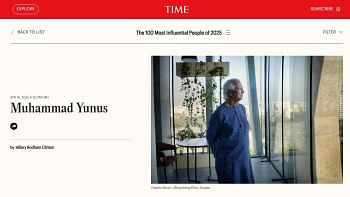Metro Line-6 to link Kamalapur
The government is going to extend the MRT Line-6 -- now under construction from Uttara to Motijheel -- up to Kamalapur Railway Station so that people can avail the rail service directly from the country’s largest railway station.
Dhaka Mass Transit Company Limited (DMTCL), a government-owned company implementing the project, has completed a topography survey and selected an alignment for the 1.16km line under the same project.
“There is a problem here as we will not be able to build the rail lines over the street … Apart from some makeshift structures on the alignment, there are 31 permanent structures [buildings], the land of which we have to acquire,” said MAN Siddique, managing director of DMTCL.
“We are now talking to them [the building owners] under social survey programme,” he said at his office yesterday.
Contacted, Railways Minister Nurul Islam Sujan said both the railways and metro rail are for the people.
“We have a plan to turn the Kamalapur Railway Station into a multi-modal hub, and the extension work [of MRT Line-6] has to be done in coordination with our plan,” he told The Daily Star yesterday.
The construction work of MRT Line-6, the country’s first metro rail project, has made 38.35 percent progress as of November, and the MRT Line-6 is expected to open on December 16, 2021, when the country will be celebrating the golden jubilee of independence.
Once completed, the 20.10km metro rail service with 16 stations will be capable of carrying 60,000 passengers an hour, reducing travel time from Uttara to Motijheel from at least two hours to less than an hour. After the extension work, the total length of the rail route would be 21.26km with 17 stations.
MAN Siddique, also a former secretary of Road Transport and Highways Division, said people coming from outside Dhaka face difficulties getting vehicles at Kamalapur Railway Station.
“Considering this, the prime minister instructed us to extend the route up to Kamalapur …,” he said.
He said the existing street from Motijheel to Kamalapur was not viable for the metro rail lines. So, they selected an alignment where most of the land is owned by Bangladesh Railway and Bangladesh Road Transport Corporation.
He added that as per the new acquire policy, owners of the 31 pieces of land would be given three-time higher price than the existing price of the land and they would get prices of their buildings at current market rate. They would get some other benefits too, he added.
Replying to a query, the DMTCL MD said as per the plan, the work of MRT Line-6 would be completed by December 2021, around three years before the stipulated time, resulting in the reduction of construction cost.
“We are hopeful that we will be able to complete the extension work with the money we can save by implementing the project before the stipulated time.”
He, however, could not say when the construction of the extension work would start.
Asked whether Bangladesh Railway had any reservation over the use of its land,
MAN Siddique said Kamalapur Station is an “iconic structure”, and the BR wanted that the station of metro rail to be built at a place that does not obstruct the view of the structure.
“We want to deal with this issue with a holistic approach, not from a single MRT Line-6 perspective,” he said, adding that apart from the MRT Line-6 station, underground stations of MRT Line-1, -2 and-4 would also be built linking Kamalapur Railway Station.
Transport expert Prof Mizanur Rahman also welcomed the initiative, saying that more people would be benefited by the step.
He said all major inter-district bus terminals and Hazrat Shahjalal International Airport have to be connected to other metro rail lines so that people coming from outside Dhaka could avail the rail service.
Prof Mizanur, also the director of Accident Research Institute (ARI) at Buet, however, said the government should not wait for completing the extension work; it should rather open MRT Line-6 within the deadline for reducing people’s suffering.
He added that the extension would not hamper the plan already been taken regarding the country’s largest railway station -- Kamalapur.
The government aims to build five metro lines -- an elevated, an underground, and three elevated and underground -- in the capital and its adjacent areas by 2030 mainly to reduce traffic congestion and air pollution.

 For all latest news, follow The Daily Star's Google News channel.
For all latest news, follow The Daily Star's Google News channel. 



Comments